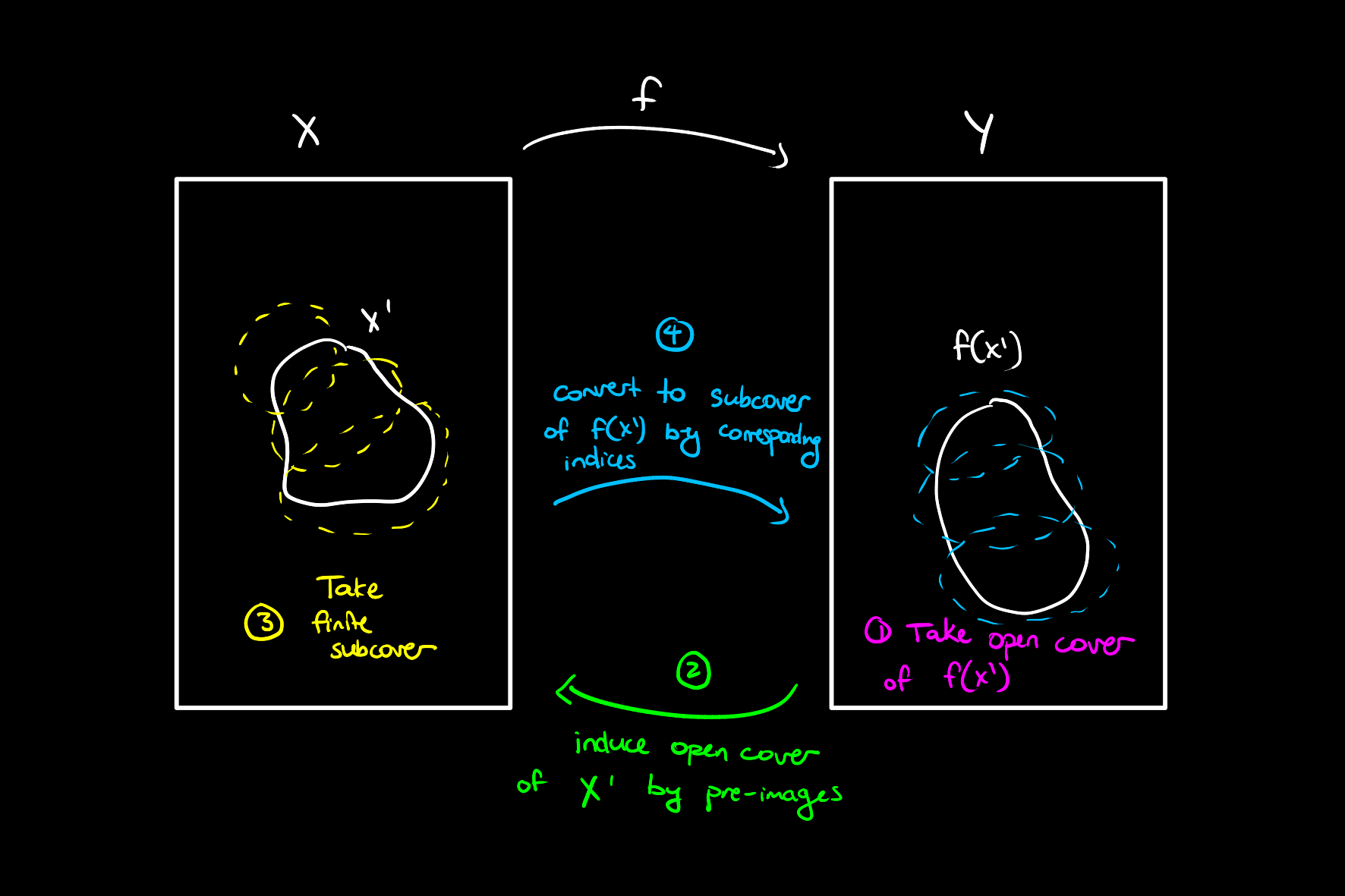Compactness is Preserved Under Continuous Functions
One key topology homeomorphism invariant is compactness, a fact fundamental to the extreme value theorem.
Let
Proof
The main strategy here is to take an arbitrary open cover of

Consider an arbitrary open cover of
Then, since pre-images preserve unions,
First we show that this set is an open cover of
Each set is open from continuity of
Then because pre-images preserve inclusions and any set is a subset of the pre-image of its image under some function, we have that
and hence the desired set covers
is an open cover of
We will now prove that the corresponding indices give a subcover of
is a finite cover of
Clearly this cover is open, and finite, we simply must prove that it does indeed cover
Now, for each